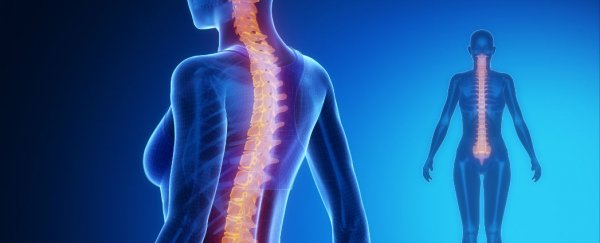Working with paralysed rats, scientists in the US have shown how they might be able to regenerate spines after injury and help paralysed people to one day walk again.
The team, from Tufts University School of Medicine, crushed the spines of lab rats at the dorsal root, which is the main bundle of nerve fibres that branches off the spine, and carries signals of sensation from the body to the brain. They then treated the spines with a protein called artemin, known to help neurons grow and function. After the two-week treatment, the nerve fibres regenerated and successfully passed signals over a distance of 4 centimetres.
"This is a significantly longer length of Central Nervous System regeneration than has been reported earlier," one of the team, physiologist Eric Frank, told ScienceAlert. "But still a long way to go!"
Reporting in a study published by the Proceedings of the National Academy of Sciences, the team says the artemin treatment was successful in regenerating both large and small sensory neurons.
And while that 4-centimetre distance is important, Frank says that's not all that counts: "The regenerating nerve fibres are growing back to the right places in the spinal cord and brainstem." He adds that this is pretty impressive, given that their subjects were several months old, which isn't young in rat years.
The results suggest that the chemical guidance cues that allow the nerve fibres to get to their correct target areas persist in the adult spinal cord, says Frank. This means that while artemin may not help regenerate all nerve fibres -some aren't receptive to it - it's likely to help with other neurones to. "If it becomes possible to get these other types of nerve fibres to regenerate for long distances as well, there is a reasonable chance that they can also grow back to their original target areas," says Frank.
The challenge is getting regenerated nerve fibres to reconnect, so they can do what there are supposed to do, which just might be possible, considering these results. If scientists could achieve that, it would be a big leap forward in improving the lives of paralysed people.
